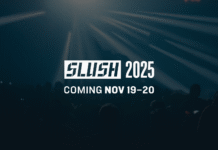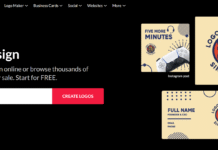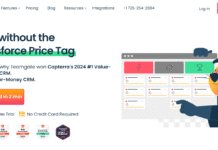Social Video Engagement: Hook, Retain, Convert
Introduction
Social video engagement is the difference between content that gets ignored and content that gets remembered. Audiences scroll fast, make snap judgments, and reward clips that deliver value immediately. Your goal is simple: earn the first three seconds, build momentum through clear structure and pacing, then convert attention into action. Done well, social video engagement compounds over time, strengthening brand recall, follower growth, and downstream conversions without inflating production budgets.
Think of the viewer’s journey as a series of micro-decisions. The hook wins the pause. On-screen text and framing win the tap to unmute. Captions and pacing win the next ten seconds. A crisp payoff and a relevant call to action win the save, share, or comment. Optimizing each of these moments is how you engineer social video engagement deliberately rather than hoping for virality. This is not about chasing trends; it is about matching message, medium, and moment.
Great ideas still fail when delivery is sluggish. You need a storyboard that respects mobile reality: vertical-first, text legible at a glance, faces and hands framed in the safe zone, and visual variety every few beats. You also need audio that feels close and present. Clean voice, tasteful music stems, and subtle sound effects turn simple footage into a sensory path that sustains social video engagement without distracting from the message.
The most reliable lever is clarity. Promise something specific early, then deliver with economy. Replace long preambles with a simple structure: show the result, reveal the method, summarize the steps, and invite a next action. This value-first pattern consistently improves social video engagement because it compresses time to insight. Pair it with a brand system—consistent color, type, and motion language—so viewers recognize your clips instantly in a crowded feed.
Finally, measure what matters. Completion rate tells you if the narrative breathes correctly. Early retention shows whether your openers truly interrupt patterns. Comments per view and saves per view indicate usefulness. Treat each upload like an experiment in social video engagement: adjust the hook, swap the thumbnail, tighten the cold open, or rephrase the caption, then watch the graph. Over a few cycles, small lifts at each step compound into large gains.
Understanding Audience Psychology and Viewing Context
The strongest social video engagement starts with intent. Why is someone watching your clip right now? They might want quick entertainment, a shortcut to solve a problem, or a moment of inspiration between tasks. Map these intents to formats: fast visual gags and transformations for entertainment, demonstration-first edits for how-to clips, and narrative vignettes for inspirational themes. When intent and format align, friction drops and engagement rises.
Context matters as much as content. Many viewers watch in short bursts while commuting or multitasking. Design for sound-off by default: on-screen headlines, progress markers, and captions that summarize each beat. Then reward sound-on with satisfying voiceover and light sonic cues. This dual-mode approach ensures social video engagement under any viewing condition, capturing casual scrollers and committed learners alike.
Personas help you anticipate objections and curiosity gaps. A beginner wants reassurance and ultra-clear steps; an advanced viewer wants nuance and speed. Build two cuts from the same footage: a tight, punchy version emphasizing outcomes, and a slightly slower version layering rationale and alternatives. Testing these against different audience segments reveals which pacing pattern drives stronger social video engagement for each cohort.
Platform-by-Platform Strategy Essentials
Every platform has its native grammar. Vertical, fast, and remixable clips excel where the feed is rapid and culture-driven. Searchable, chaptered explainers perform better where session length is longer and the archive matters. To maximize social video engagement, repurpose with intent rather than cross-post blindly. Change your opening beat, tweak on-screen text for the audience’s vocabulary, and recalibrate duration to each platform’s sweet spot.
Think in terms of discovery flows. Short clips tease a question or show the end result first to earn a tap. Mid-length reels combine quick context with a crisp demonstration. Longer pieces deliver depth for those ready to invest attention. Connect these with clear directional CTAs so the viewer always knows the next best clip. This laddered system compounds social video engagement by meeting viewers at their current commitment level.
Algorithm signals evolve, but certain principles persist: early retention, session contribution, and meaningful interactions. Optimize the first screen a viewer sees—cover frame, opening shot, and headline—because improving those three elements often lifts social video engagement faster than any single edit inside the timeline. Treat the cover as a promise, not a poster; it should preview the payoff, not repeat the title.
Craft Hooks That Win the First Three Seconds
Hooks are not just lines; they are visual events. Start with a pattern interrupt that is obvious at thumbnail size: a surprising close-up, an after-before flip, or a macro shot that begs explanation. Pair this with a short text promise that names the result. When the first frame speaks clearly without sound, social video engagement benefits immediately because you remove decoding effort.
Value-forward hooks outperform vague teasers. Lead with the outcome and compress the setup. For tutorials, show the finished result for one second, then jump to the minimal path to achieve it. For product stories, show the transformation in context—on a person, on a desk, in a workflow—so the brain can simulate benefit quickly. Frictionless comprehension fuels social video engagement more reliably than cleverness alone.
Use open loops to keep attention moving. Ask a specific question you will answer by the end, or display a visual you will explain in step three. Sprinkle micro-promises in on-screen text: what is coming in five seconds, what you will reveal at the halfway mark. These scaffolds help viewers navigate and trust your pacing, which stabilizes social video engagement across the full clip.
Story Structures That Maximize Retention
Short clips still need narrative bones. A micro three-act structure works well: show the problem in one beat, reveal the fix in two beats, and demonstrate the result in three. This cadence delivers momentum without rushing. For how-to content, try demonstration-first sequencing: result, steps, recap. It accelerates understanding and consistently elevates social video engagement because viewers see the payoff before investing.
Vary shot types and rhythms to avoid visual fatigue. Alternate wide, medium, and tight angles. Insert hand details, tool interactions, and reaction shots to reset attention every few seconds. Use speed ramps sparingly to highlight transitions rather than to decorate the timeline. Each purposeful variation is a small insurance policy for social video engagement, keeping the brain curious enough to continue.
End with resonance, not just information. Summarize the takeaway in a single on-screen sentence and pair it with a next step that matches intent: try the technique, save the checklist, or watch the deeper dive. When endings feel complete yet open a door, you earn comments, saves, and click-throughs—the interactions that strengthen social video engagement long after the initial view.
Sound Design That Keeps Viewers Watching
Audio is invisible design. Prioritize voice clarity with a lavalier or close shotgun mic, reduce room reflections with simple damping, and keep loudness consistent so mobile listeners are not riding the volume keys. Use music stems with distinct sections so you can time beat drops to edits. Small whooshes, taps, and swells mark transitions the eye feels even if it does not notice. These choices quietly elevate social video engagement by making the timeline feel intentional.
Balance for sound-off and sound-on simultaneously. Captions should not merely transcribe; they should summarize and chunk ideas. Bold, high-contrast text is easier to parse quickly, while timed emphasis on verbs or numbers guides the eye. When sound turns on, the voiceover should add color or shortcuts, not repeat the screen verbatim. This dual channel of meaning increases social video engagement because every viewer, in any context, receives a complete experience.
Editing For Engagement And Completion Rate
Edit with a retention map in mind. Trim the cold open to the absolute minimum that preserves curiosity. Remove filler, combine lines, and prefer visual explanation over verbal redundancy. Pace the first ten seconds faster than the middle, then add a subtle lift near the end to carry viewers to the CTA. This dynamic arc is a reliable recipe for stronger social video engagement.
Previsualize the cover frame inside the timeline. Freeze the most legible, curiosity-rich frame, then design the on-screen text for small-screen readability. Choose a frame that shows hands or faces in action; humans process intent faster than objects. A thoughtful cover improves taps and sends a positive signal to the feed, which often translates into higher social video engagement before the first second even plays.
Platform-by-Platform Strategy Essentials
TikTok and Reels: speed, vertical clarity, remixability
Aim for a crisp cold open that resolves confusion in under three seconds. Keep captions large and high-contrast, and favor demonstration-first edits. Use the duet and remix culture to invite co-creation; when viewers feel your clip is a prompt, social video engagement scales beyond your own audience. Save complex context for replies stitched to the original so the first post stays lightweight.
YouTube Shorts and bridges to depth
Shorts excel at discovery; long-form wins depth. Design a bi-directional bridge. Close each Short with a one-line payoff and a simple path to the full video. Mirror the promise in the long-form title and first 15 seconds, so viewers feel continuity. This ladder prevents drop-off and compounds social video engagement across formats.
LinkedIn for B2B authority
Lead with a crisp outcome statement and a single proof visual. Keep typography clean and corporate-friendly. Prioritize case snippets, frameworks, and before–after diagrams. Encourage thoughtful comments with a question that invites professional input; substantive discussion is a strong signal for social video engagement in a business feed.
Facebook and X: share mechanics and communities
On feeds tuned to news and conversation, relevance windows are shorter. Tie your opening beat to a timely problem, then deliver a compact solution in under 30 seconds. Use native posting, avoid link-first captions, and seed discussion with a specific prompt that turns views into threads—threads that amplify social video engagement through notifications and resurfacing.
Visual Design and Motion Principles
Frame for vertical first
Keep faces, hands, and key objects inside safe zones to avoid UI overlap. Design on-screen text for thumb-distance legibility. A vertical-first master yields cleaner reframes and strengthens social video engagement on mobile-heavy feeds.
Color and brand consistency
Choose a small color system and stick to it. Let one accent color highlight verbs, numbers, or outcomes in text overlays. The goal is instant recognition in the scroll; familiarity boosts taps and stabilizes social video engagement.
Motion graphics and kinetic type with restraint
Use movement to guide attention, not to decorate. Animate only the words that matter. Align transitions with beat markers; timing motion to audio makes sequences feel inevitable, which keeps social video engagement steady without fatiguing the eye.
B-roll, inserts, and pattern variation
Break monotony every few seconds. Cut to hand details, UI close-ups, or cause–effect inserts. Pattern variation is preventive medicine for drop-offs and a quiet driver of social video engagement.
Calls to Action That Spark Interaction
Comment prompts and question ladders
Ask a question that is easy to answer in one line, then follow with a deeper optional prompt. This ladder invites both quick and thoughtful replies, boosting social video engagement through reply chains.
Save, share, and remix invitations
Match the CTA to the clip’s utility. For checklists and frameworks, ask for a save. For transformations, invite a remix. Contextual CTAs feel helpful and raise social video engagement without sounding salesy.
Soft versus direct CTAs
Soft CTAs work early; direct CTAs suit the last three seconds. Use the ending energy spike to convert attention into a concrete action. One action per clip is enough; stacking CTAs dilutes social video engagement.
Pinned comments and reply threads
Prewrite a pinned comment that summarizes the takeaway and asks a follow-up. Then reply quickly to top comments with clarifications or micro-demos. Active threads keep the clip circulating, lifting cumulative social video engagement.
Data-Driven Optimization Loop
Read retention like a map
Locate the first dip. If it lands before second three, the hook is unclear. If it dips at context handoff, the transition is abrupt. Fix one hypothesis per edit and re-upload a variant. Small lifts in the first 25 percent often unlock big gains in social video engagement.
A/B testing thumbnails, titles, and hooks
Test one variable at a time. For covers, compare face-in-action versus outcome-in-frame. For titles, outcome-first versus curiosity-first. For hooks, question line versus visual reveal. Choose winners on early tap rate and first three seconds of retention—leading indicators for social video engagement.
Topic clustering and content pillars
Group videos into three or four pillars. Within each, build a library of related clips that interlink via end cards or pinned comments. Pillars create navigable rabbit holes, increasing session time and downstream social video engagement.
Iteration cadence and backlog hygiene
Adopt a weekly cadence: one new format test, one optimization of a prior post, and one safe, proven format. This balanced diet grows social video engagement consistently without gambling your whole schedule on experiments.
Community Building and Two-Way Formats
Live sessions and interactive polls
Use short live segments to answer questions raised in comments. Polls surfaced during live keep watchers active and yield new clip ideas. The immediacy of live interaction can spike social video engagement and inform your next edits.
User-generated content and stitches
Issue a concrete prompt with clear constraints: time limit, angle, and a sample script. Feature the best responses in your next post and credit creators. Recognition loops are fuel for social video engagement because they turn viewers into collaborators.
Featuring viewer stories
Invite one viewer problem per week, then solve it on-camera. Real problems, real stakes. This serial format builds trust and raises social video engagement by making the audience part of the narrative.
Creator collaborations
Cross with creators who share your audience but not your exact topic. Co-create a two-part sequence and publish simultaneously. Reciprocal introductions expand reach and seed fresh social video engagement in both communities.
Accessibility and Inclusivity
Readable text and contrast
Keep body text above the 16–20 px equivalent in vertical frames and maintain strong contrast. Faster comprehension reduces friction and supports social video engagement for sound-off viewers.
Descriptive captions
Caption not just the words but also crucial sounds or visual transitions. Descriptive cues help more people follow the logic, increasing completion and overall social video engagement.
Cultural sensitivity and representation
Avoid clichés and stereotypes. Show varied voices and contexts. When more people see themselves in your clips, social video engagement broadens naturally.
Mobile-first legibility
Test on a mid-range phone in bright light. If it reads there, it reads anywhere. Legibility under real conditions is non-negotiable for sustained social video engagement.
Production Workflows That Scale
Pre-production checklists
Lock the promise, outline beats, and list necessary inserts before filming. Prepared shoots cut reshoots and stabilize social video engagement by ensuring you capture every proof visual.
Batch shooting and shot libraries
Film multiple intros, outcomes, and hand inserts in one session. A reusable library speeds edits and keeps social video engagement consistent across a series.
Reusable motion and graphic systems
Build templates for lower thirds, progress bars, and end slates. Consistency reduces cognitive load and reinforces brand memory, which supports recurring social video engagement.
Review pipelines and version control
Adopt a simple pass system: content pass, clarity pass, rhythm pass, caption pass. Each pass has one owner and one goal. Clean pipelines prevent last-minute quality dips that hurt social video engagement.
Repurposing and Distribution
From long-form to micro-clips
Identify three peak moments and cut them as standalone Shorts or Reels. Add a one-line teaser that points back to depth. This loop recycles attention and amplifies social video engagement.
Platform-native edits
Change the first frame, rewrite on-screen text in the platform’s voice, and adjust aspect ratios. Native-feeling posts get favored, lifting social video engagement without extra ad spend.
Mini-series sequencing
Publish related clips on a predictable schedule and number the parts in on-screen text. Predictability invites binge behavior, which inflates cumulative social video engagement.
Cross-promotion with one internal link
For tactical deep dives on positioning and audience strategy, visit the marketing section here: marketing. Keep additional links out of captions so the algorithm benchmarks your clip on merit, preserving social video engagement.
Measuring Success Beyond Views
Engagement, watch time, and completion
Use engagement per view and completion rate as your north stars. When these rise, distribution usually follows, and social video engagement compounds organically.
Click-through and assisted conversions
Track clicks from profile or end cards to see which clips move people along the journey. Assisted conversions reveal the hidden value of high social video engagement beyond raw view counts.
Sentiment and community health
Scan comments for intent words like tried, saved, shared. Positive action language is a qualitative proxy for strong social video engagement.
Metric alignment with business model
Choose a single goal per series: list growth, demo requests, or product trials. Align edit choices and CTAs to that goal so social video engagement translates into outcomes that matter.
Advanced Testing Systems
Hypothesis-driven experiments
Run one clear experiment per upload. State a hypothesis such as: changing the opener from a talking head to a hands-in-action close-up will increase early retention by five percent. Keep all other variables stable. This isolates impact and reveals what truly moves social video engagement.
Variant frameworks
Use simple variants for speed: A/B for cover frames, A/B/C for opening beats. For A/B, test face-in-action versus outcome-in-frame. For A/B/C, compare a question line, a bold promise, and a visual reveal. Choose winners on tap rate plus retention in the first three seconds—leading indicators for stronger social video engagement.
Micro-metric dashboards
Track four lightweight metrics: tap rate, three-second hold, 50 percent completion, and comments per view. Visualize them as a funnel. When the top narrows, fix the cover and opener. When the middle narrows, adjust pacing transitions. When the bottom narrows, improve ending payoff and CTA. This clarity lets you triage social video engagement without guesswork.
Creative sprints and retros
Adopt a two-week sprint: week one for brainstorming and production, week two for publishing, measurement, and retro. In the retro, capture three wins, three frictions, and one process tweak. This cadence compounds learnings and stabilizes social video engagement across months.
30-Day Content Map
Pillar planning
Choose three pillars tied to your business goals: education, transformation, and community. Each pillar should ladder to a measurable outcome. Education drives saves, transformation drives shares, community drives comments—together lifting social video engagement.
Frequency and cadence
Publish five times per week across short-form, with one deeper piece anchoring the week. Reserve one day for testing a fresh format. The mix provides safety and novelty, keeping social video engagement steady while you explore new ideas.
Sample 30-day calendar
| Day | Pillar | Format | Hook type | Outcome measure |
|---|---|---|---|---|
| 1 | Education | Reel/Short | Visual reveal | Saves per view |
| 2 | Transformation | Before–after | Outcome-first | Shares per view |
| 3 | Community | Q&A clip | Question ladder | Comments per view |
| 4 | Education | Tutorial micro | Result-steps-recap | 50% completion |
| 5 | Transformation | Case snippet | Proof visual | Tap rate |
| 6 | Community | Poll + stitch prompt | Open loop | Reply chains |
| 7 | Deep piece | 3–6 min | Narrative payoff | End-card CTR |
| 8–14 | Repeat pattern with new topics | |||
| 15 | Retro + remix best performer | Remix | Outcome-first | Lift vs original |
| 16–21 | New hooks on same topics | A/B/C openers | Early retention | |
| 22–28 | Community features | Viewer stories | Sentiment trend | |
| 29 | Compilation | Top moments | Saves per view | |
| 30 | Live recap | AMA | Session length |
Use this table as a living plan. Move the strongest clips forward in the schedule and retire formats that consistently underperform. The goal is a portfolio that compounds social video engagement by design, not chance.
Publishing Checklist
Pre-publish checks
-
Promise clarity in the first frame: the benefit must be legible with sound off.
-
Safe-zone framing: faces, hands, and key text clear of UI overlays.
-
Caption design: chunked lines, high contrast, time-coded emphasis on verbs and numbers.
-
Audio balance: voice dominant, music stems ducked under speech, no harsh sibilance.
-
Pacing map: fast first ten seconds, breathable middle, energy lift before CTA to carry viewers through.
-
Cover frame: curiosity-forward image with a one-line payoff; ensure legibility at thumbnail size.
-
CTA fit: one action only, aligned to intent—save, comment, or watch the deeper dive.
-
Compliance and inclusion: no misleading claims, readable text, descriptive captions for key sounds.
-
Internal reference: end-card or pinned comment that guides to your next clip to extend social video engagement.
-
Final sanity scan on a mid-range phone, bright light, sound off and sound on.
Post-publish actions
-
Pin a clarifying comment that restates the takeaway and asks a single, easy question.
-
Reply to the first ten comments within one hour to seed threads.
-
Monitor the first 60 minutes for early retention; if under target, consider a fast re-upload with a tighter opener.
-
Log results in your sprint dashboard to track social video engagement over time.
Recovery Playbook for Underperforming Posts
Diagnose the failure point
If tap rate is low, the cover frame or title is unclear. If the first dip is before second three, the opener is confusing. If mid-clip drop-off occurs at context handoff, your transition lacks a bridge. Precise diagnosis prevents random edits and accelerates the path back to healthy social video engagement.
Rapid variants
Create a 24-hour recovery plan with three micro-edits:
-
Replace frame zero with a clearer outcome visual.
-
Compress the cold open by one sentence and add an on-screen progress marker.
-
Rephrase the first caption line to state the payoff explicitly.
Publish the strongest variant while the audience window is still open. Quick, surgical changes often revive social video engagement without reshooting.
Reframing and redistribution
If a post stays soft after variants, recycle the core idea with a different angle: shift from how to why, or from result to mistake-avoidance. Schedule it on a different platform with native vocabulary and adjust the CTA. A new frame of reference can unlock social video engagement for the same core message.
Learn and bank assets
Extract any usable inserts—hand shots, reactions, proof visuals—into your library. Even if the post underperformed, pieces of it can strengthen future edits. Banking assets ensures each effort contributes to the flywheel of social video engagement.
Advanced Systems for Scale
Content atoms and recombination
Break each shoot into atoms: hook shots, outcomes, steps, reaction beats, and CTAs. Tag them by topic, emotion, and visual type. Recombine atoms to assemble fresh clips quickly. This modular approach keeps quality high and social video engagement consistent while output scales.
Narrative templates
Create templates for common structures: result-first tutorial, myth-bust sequence, challenge–reveal–payoff, and checklist delivery. Templates speed scripting and protect pacing. When the bones are proven, each new story inherits a higher baseline of social video engagement.
Quality gates
Add a pre-publish gate where one reviewer scores clarity (cover, opener), utility (takeaway, steps), and momentum (pacing, variety) from one to five. Require a minimum composite score before publishing. Quality gates prevent gradual drift that erodes social video engagement.
Scenario Playbooks
Product launch burst
Use a three-clip arc: teaser with a single irresistible outcome, demo with three proof visuals, and objection handling with rapid-fire Q&A. Stagger within 48–72 hours to maintain momentum. The arc builds layered credibility and strengthens social video engagement across the launch window.
Evergreen education
Record once; publish many times with seasonal hooks and new captions. Update examples while keeping the core steps stable. Evergreen systems accumulate saves, a durable driver of social video engagement.
Community challenge
Issue a seven-day micro-challenge with a tight prompt and a sample script. Spotlight submissions daily. Momentum builds from recognition, and social video engagement rises as creators bring their audiences into your thread.
Conclusion
Social video engagement is engineered, not accidental. It begins with a clear promise in the first frame, continues through intentional pacing and legible design, and culminates in a single action that matches viewer intent. The strongest results come from simple, testable hypotheses, tight creative systems, and a steady cadence of iteration.
Treat each clip as a small experiment. Optimize the cover and opener for instant comprehension. Vary shot patterns to refresh attention. Use captions that summarize meaning, not just speech. Make CTAs contextual and singular. Read retention like a map and change one variable at a time. When you connect short-form discovery to deeper content and anchor it with community formats, social video engagement compounds across weeks, not just hours.
Build workflows that scale: atomize footage, template narratives, and enforce quality gates. Plan your month around pillars that drive saves, shares, and comments in balance. When a post stumbles, recover fast with surgical variants, then bank the useful parts. Over time, these habits convert creativity into a predictable system one that turns scrollers into subscribers, viewers into participants, and attention into outcomes that matter.















































